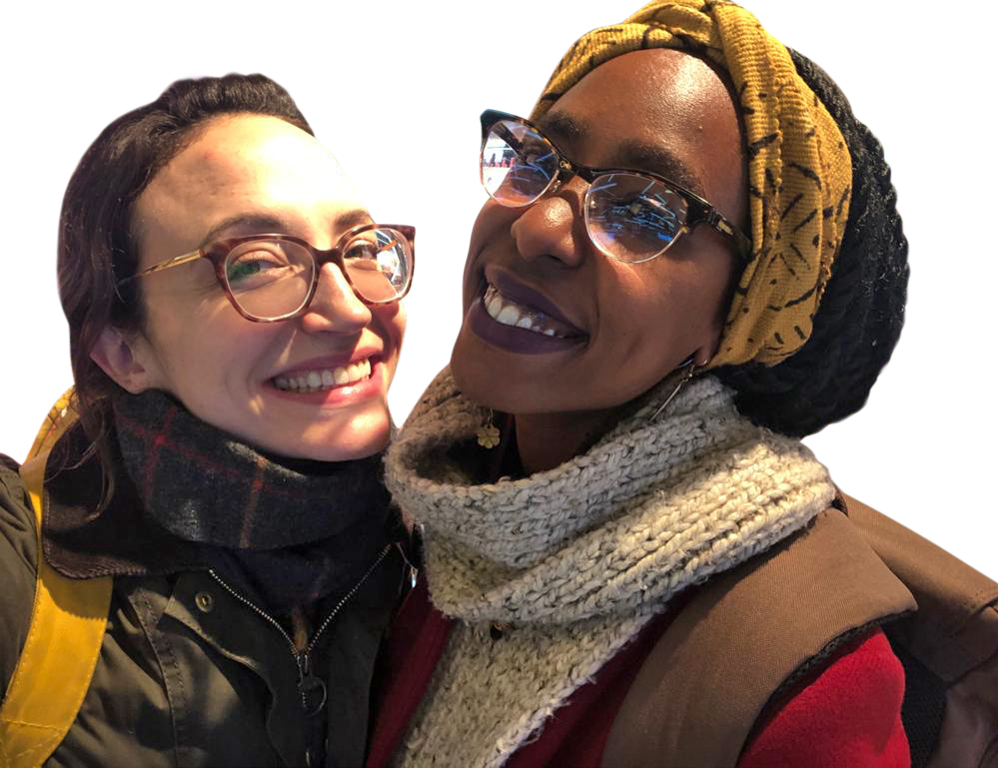
Chao (right) and Windham-Stewart are part of the team that founded the MBC /
What are the aims of the Museum of British Colonialism?
The Museum of British Colonialism was founded in January 2018 by a group of women in Kenya and the UK who recognised the need for a space to restore and make visible the suppressed, destroyed, or under-represented histories relating to British colonialism. We're entirely run by volunteers in both Kenya and the UK from a very mixed range of professions and backgrounds. We're a virtual museum but the work we do also has a physical presence, for example, the first project and exhibition we embarked upon aimed to uncover and digitally reconstruct detention camps from the Mau Mau Emergency in Kenya.
Why is it so important to tell the story of British colonialism and what role should museums play in telling that story?
A triumphant and benevolent version of the story of British colonialism has been told for a very long time. This is far from the whole story and the lack of honest and self-reflecting analysis of this story has had real world consequences. It has also led to an inflated sense of moral high ground in Britain and other former coloniser countries making it very hard to challenge effectively.
Museums are guilty of portraying this skewed narrative of British colonialism, whilst at the same time having the power to correct it. We hope that other museums will follow our model and portray a fuller picture of the history which, no matter how controversial, needs to be told. This will include a difficult conversation that museums need to have about how some of the objects they display were acquired, and whether or not they should continue to be housed there.
How will 'visitors' access the stories that will come from the museum?
We're primarily an online, digital museum however we do hold exhibitions, film screenings, and other events both in Kenya, the UK and beyond. With the global pandemic all our activities have moved online but we hope to return to the ‘real world’ at some point in the future.
Being a digital museum allows us to have many more ‘visitors’ than if we were tied to a physical space and we attract an audience from all over the world. While we believe it's necessary to complement and realise our online work with physical events and interventions, we also believe in trying to take that work to people, rather than set a requirement that people come to us by establishing a central physical space. That’s a different way of thinking about doing museum work and it’s critical to our process.
What are your thoughts on museums becoming the repositories for statues, portraits and artefacts relating to colonialism and the slave trade?
Museums have long been considered repositories for statues and, more recently, that applies to those that have been toppled. But museums are not repositories for a nation’s unwanted junk, nor are they analgesic spaces where controversial histories can be rendered safe and printed on souvenirs. Museums should be spaces for learning, discovery, and the bringing together not only of objects, but also of people and stories.
The very idea of museums, from Renaissance cabinets of curiosity to the genocide-minded skull-collectors of the 19th century, is rooted in colonialism. Today, too many museums are dusty relics of the Empire itself, from their vapid architecture to their blood-stained collections. Those that lament the pulling down of statues as ‘destroying history’ have a similarly outdated understanding of heritage.
To build a Museum of British Colonialism we need to discard all of this heritage and imagine a museum without walls, curators, collections or gift shops.
"Museums are not analgesic spaces where controversial histories can be rendered safe and printed on souvenirs"
Do you have any thoughts on what should happen to the toppled statue of Edward Colston in Bristol?
The conversations being had around the toppling of the statue have already provided more discussion of the history than the statue itself ever did. Our advice would be to focus on this discourse.
The important thing is not what happens to the statue, it's what that means in relation to how people understand the history of their cities and communities and, ultimately, the country.
What have you learned through the experience of establishing the Museum of British Colonialism that others could learn from?
It's been an eye-opening experience. To engage with Britain’s colonial history, museums should be seen as spaces to explore what we don’t know, rather than present what we do know or what we want others to think.
They are spaces for social, emotional and psychological exploration and connection and they can have an explicitly social justice mission.
The work is often in the process, rather than simply the display of objects; it's in the coming together of communities; in the listening and the creation of work – they can be spaces of social and transitional justice, not just buildings that uphold and maintain certain immovable positions, narratives or objects.